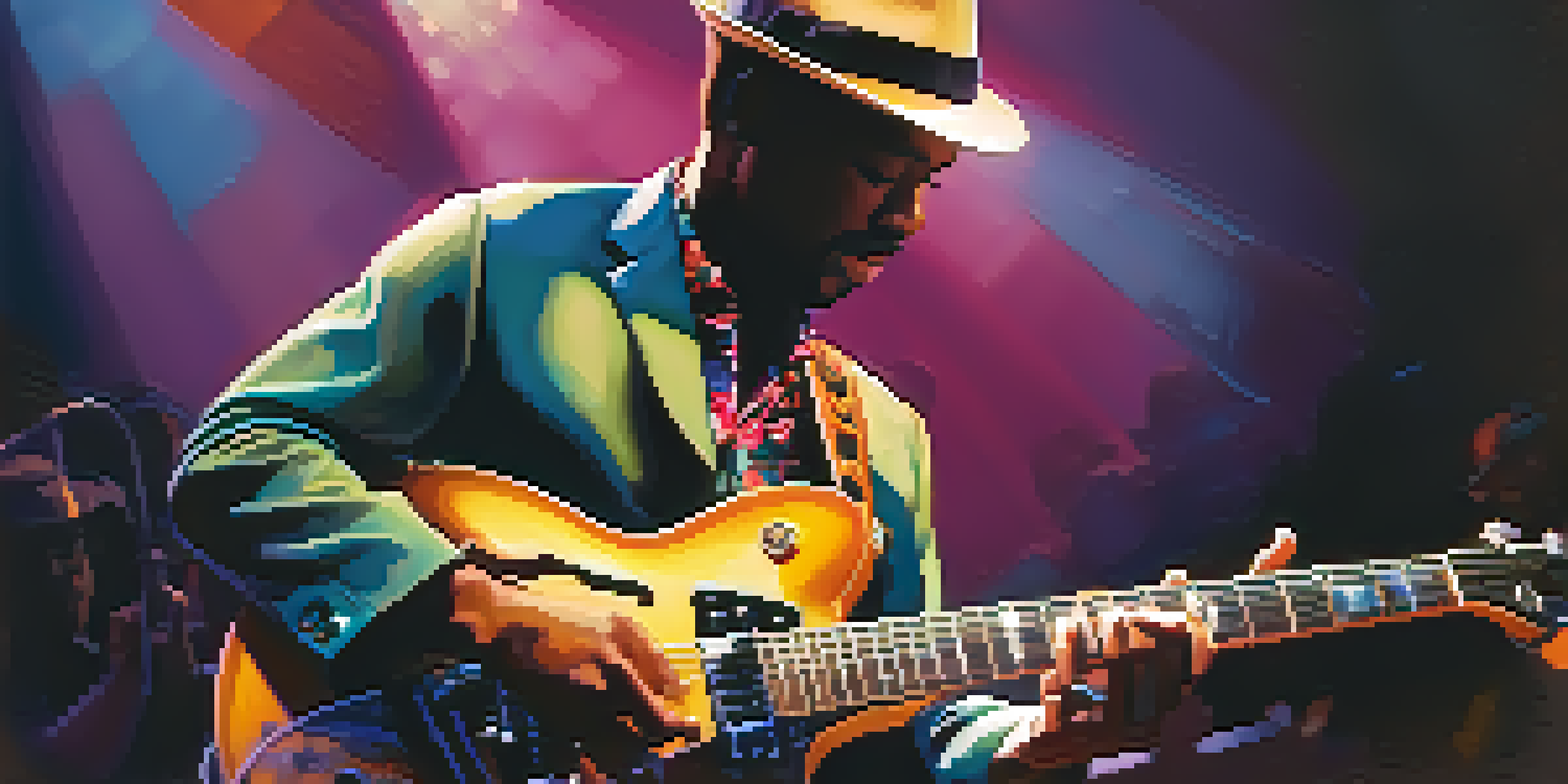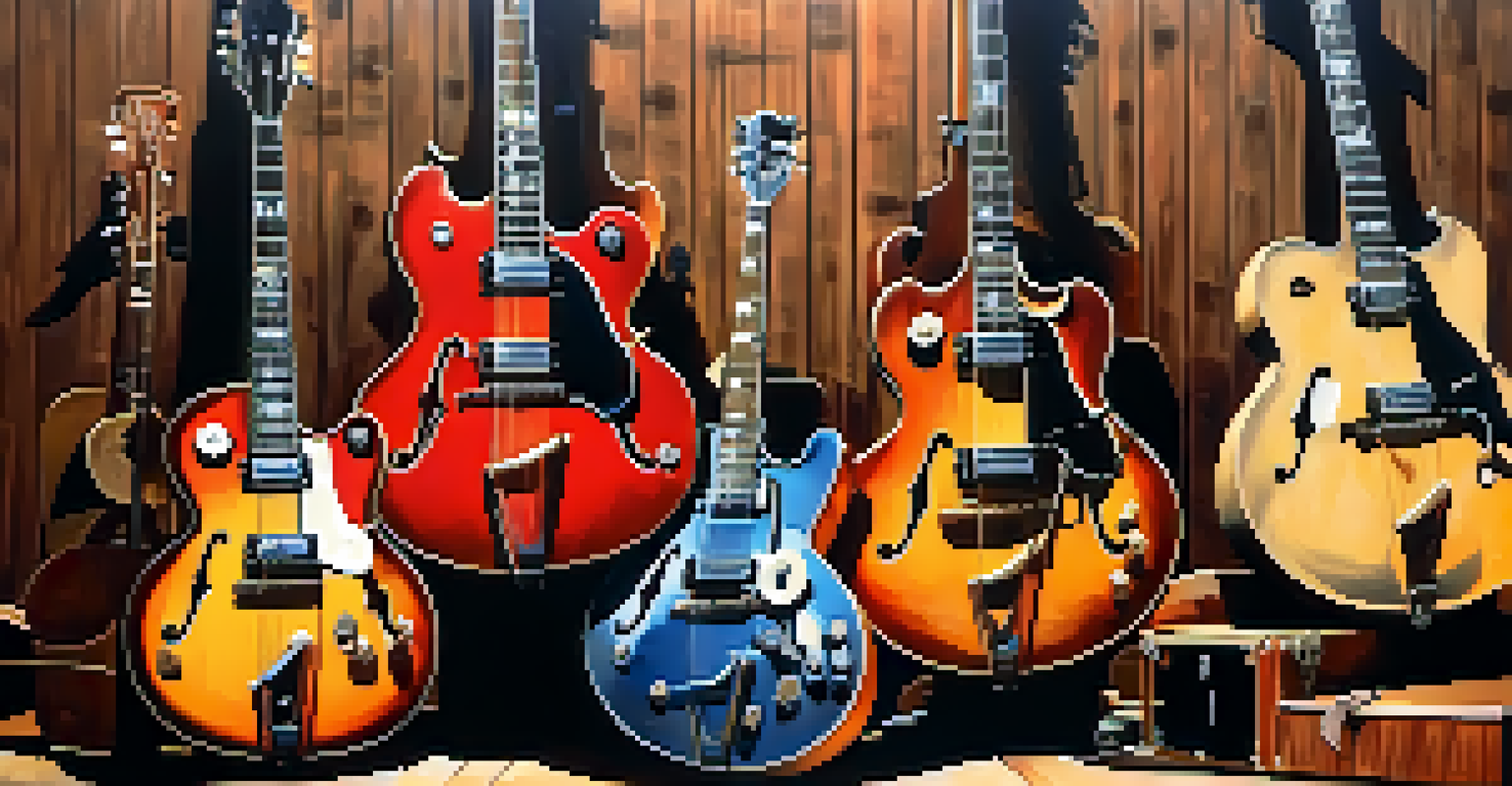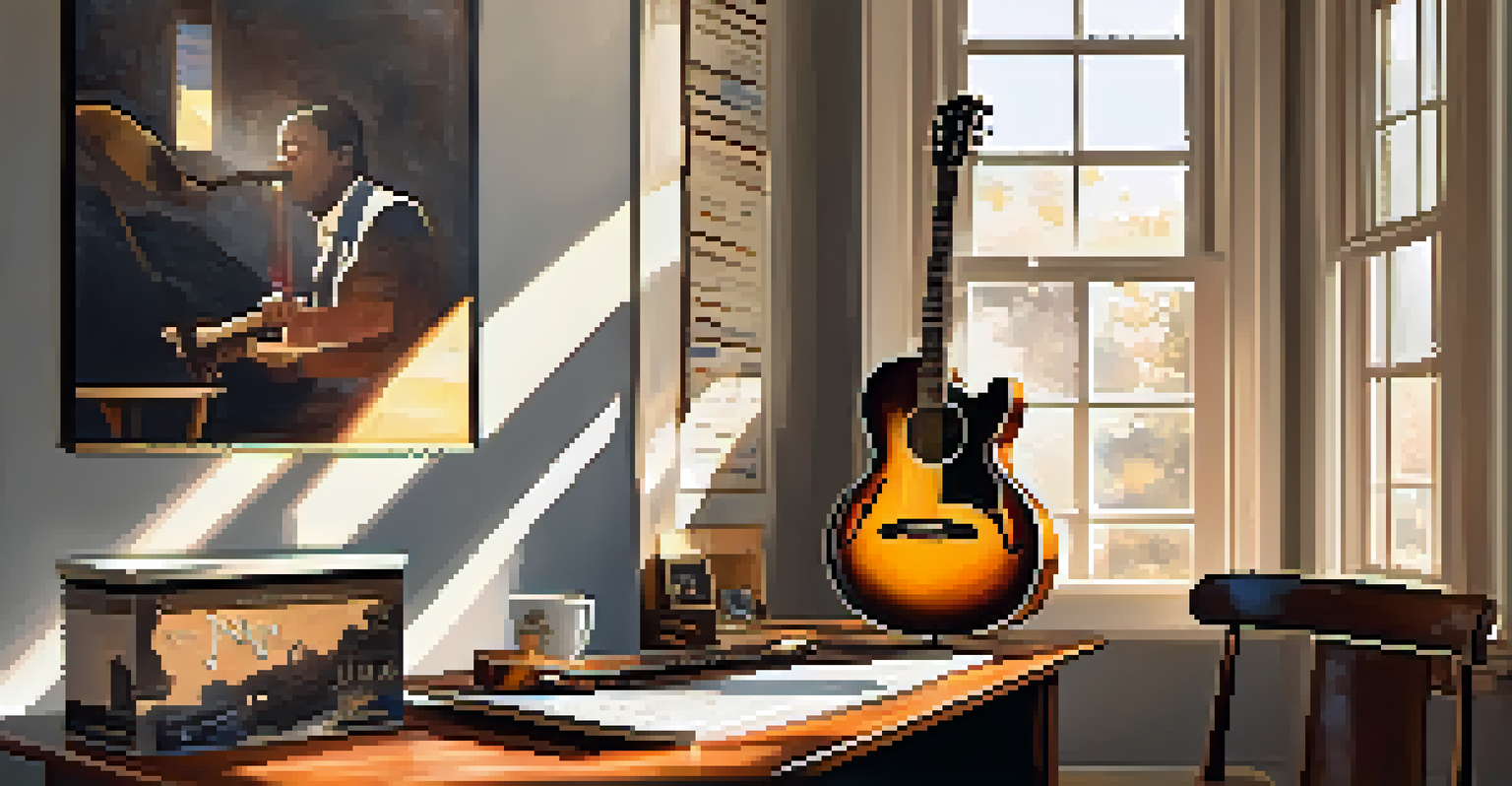How to Develop Your Own Jazz Guitar Improvisational Style

Understanding the Basics of Jazz Guitar Improvisation
Before diving into improvisation, it's crucial to grasp the foundational elements of jazz guitar. This includes understanding jazz chords, scales, and rhythms. Each component plays a role in how you create melodies and harmonies on the guitar.
Music is an outburst of the soul.
Listening to jazz greats can also deepen your understanding. Artists like Wes Montgomery and Pat Metheny embody different styles, offering inspiration and insight into various improvisational techniques. Pay attention to how they construct their solos.
Remember, improvisation is about expression. It’s not just about playing the right notes, but about conveying emotion and connecting with your audience. Starting with a solid grasp of the basics will set the stage for your unique style.
Exploring Different Jazz Styles for Inspiration
Jazz is a rich tapestry woven from various styles, like bebop, swing, and fusion. Each style has its own distinct characteristics and techniques. By exploring these genres, you can discover what resonates with you.

For example, if you enjoy the fast-paced nature of bebop, incorporating its complex chord changes and rapid lines can influence your improvisational style. Alternatively, the laid-back feel of bossa nova might inspire you to create smoother, more melodic solos.
Master Jazz Basics for Improvisation
Understanding chords, scales, and rhythms is essential for creating expressive melodies on the jazz guitar.
Experimenting with different styles can be eye-opening. It allows you to blend elements from various genres, enriching your improvisational palette and helping you develop a sound that’s uniquely yours.
Practicing Scales and Arpeggios for Fluidity
To improvise confidently, practicing scales and arpeggios is essential. These tools serve as the building blocks for your solos, enabling you to navigate the fretboard with ease. Regular practice helps internalize these shapes, making them second nature during performances.
The only way to make sense out of change is to plunge into it, move with it, and join the dance.
One effective method is to practice scales in different positions on the guitar neck. This not only improves your finger dexterity but also enhances your ability to shift between scales seamlessly while improvising.
Incorporating arpeggios adds depth to your playing. They allow you to outline chords dynamically, creating a more complex and interesting sound when you improvise. The more you practice, the more fluid and expressive your improvisation will become.
Listening and Analyzing Other Musicians
Listening to other musicians is a powerful way to develop your own style. Focus on how they approach improvisation, noting their phrasing, note choices, and emotional expression. This can provide valuable insights into new techniques you may want to incorporate into your playing.
When analyzing solos, try to transcribe them by ear. This exercise sharpens your listening skills and helps you understand the nuances of their improvisational choices. It’s like peeking into their creative process.
Experiment with Jazz Styles
Exploring various jazz styles can inspire your unique improvisational voice and enrich your musical palette.
Additionally, don’t hesitate to incorporate what you learn into your playing. It’s about building a toolkit from various influences, allowing you to blend those elements into your own unique voice.
Creating a Personal Vocabulary of Licks
Developing a repertoire of licks is a fantastic way to enhance your improvisational style. Licks are short musical phrases that you can weave into your solos, adding personality and flair. Start by learning famous licks from your favorite jazz guitarists and then modify them to fit your style.
Once you have a collection, practice these licks in various keys and contexts. This versatility will enable you to use them effectively during different songs and jam sessions. Over time, these licks will become a natural part of your playing.
Don’t be afraid to invent your own licks too! Experimenting with different rhythms and note combinations can lead to unique phrases that feel authentic to you. This personal vocabulary will be a key component of your improvisational identity.
Improvising with Jazz Standards
Jazz standards are a great platform for practicing improvisation. These well-known songs provide a familiar structure, allowing you to focus on developing your ideas without getting lost. As you become comfortable with the chord progressions, you can start experimenting with your improvisational techniques.
Try to explore different approaches to a single standard. For instance, play it straight the first time, then reinterpret it with a swing feel or a bossa nova rhythm on subsequent rounds. This not only keeps the music fresh but also challenges you to think creatively.
Learn from Mistakes in Music
Embracing mistakes as opportunities for creativity can enhance your improvisational skills and lead to innovative sounds.
Recording your improvisations over these standards can be insightful. Listening back allows you to reflect on your progress, identify areas for improvement, and refine your unique approach to each piece.
Embracing Mistakes as Learning Opportunities
In the journey of developing your jazz guitar improvisational style, mistakes are bound to happen. Instead of viewing them negatively, embrace them as valuable learning opportunities. Often, the most interesting musical ideas come from unexpected moments.
When you hit a wrong note, pause and consider how you can make it work. This creative problem-solving can lead to new and innovative sounds that you might not have discovered otherwise. Sometimes, these 'mistakes' can become signature elements of your style.

Remember, every great musician has faced their share of missteps. What sets them apart is their ability to learn and adapt. By maintaining a positive mindset toward mistakes, you’ll find that your improvisational skills grow in leaps and bounds.